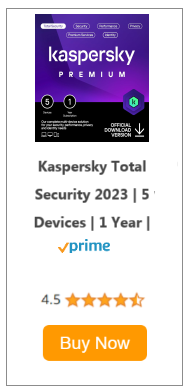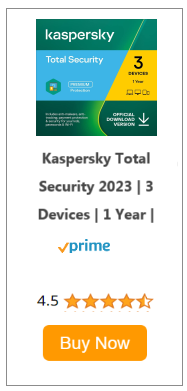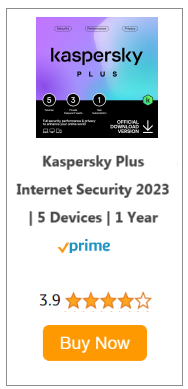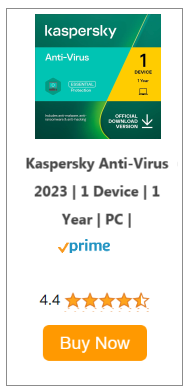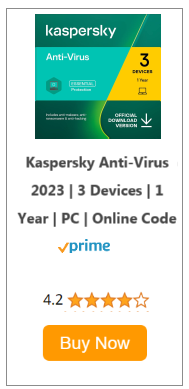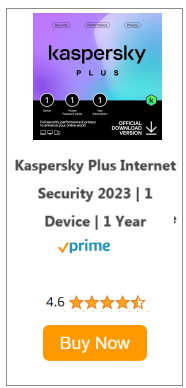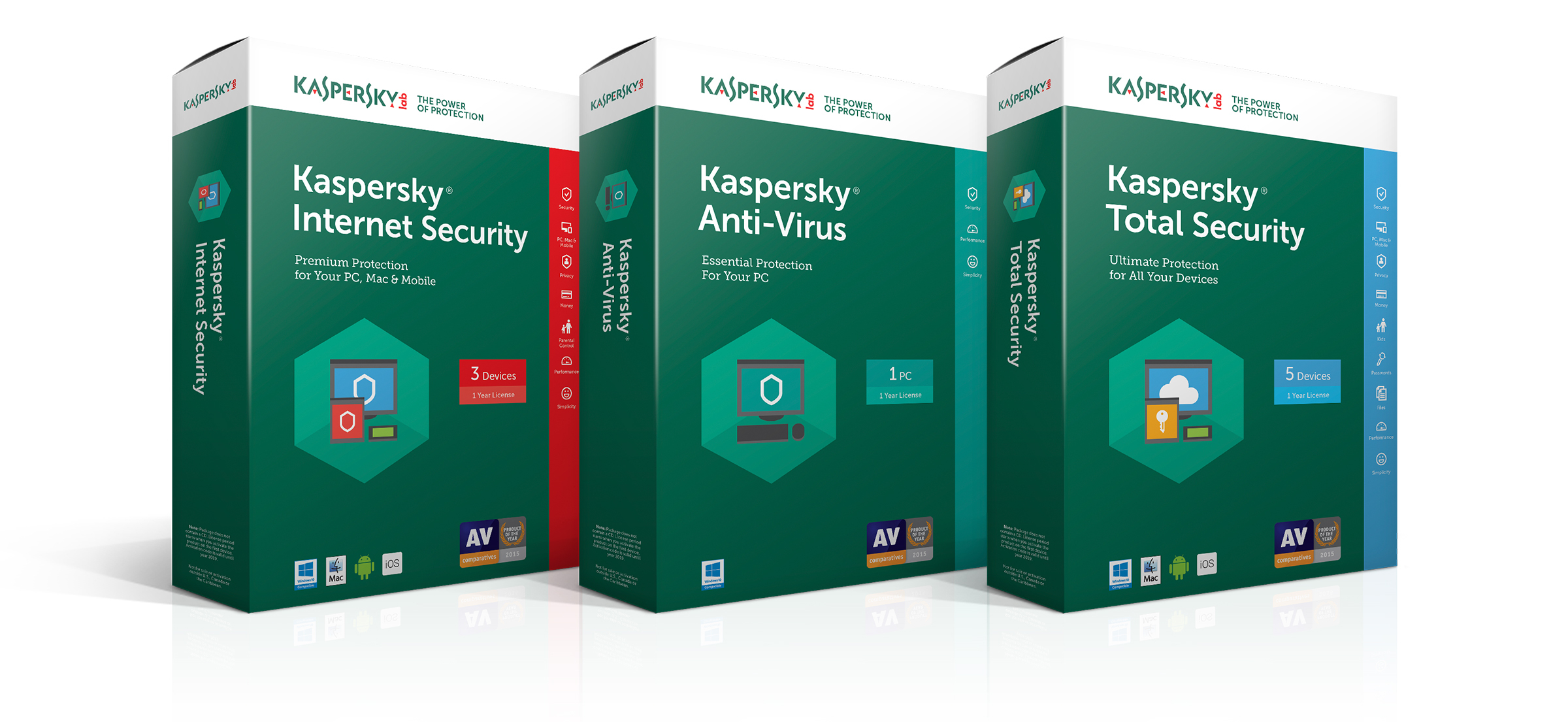
Kaspersky Antivirus reviews

Buy on amazon.com
We rate and evaluate all products, including Kaspersky’s, based on their merits and effectiveness, not on any political or other considerations. However, based on the increasing censure and criticism of Kaspersky by US government agencies, foreign agencies, and informed third parties, we can no longer recommend Kaspersky’s products. Because we have not found or been presented with any hard evidence of misdeeds on the part of Kaspersky, however, we are leaving our original review in place for those who wish to decide for themselves.
When you go to buy a cantaloupe, you can choose a good-looking one, pick it up, and sniff it for ripeness. But there’s no similar sniff test for antivirus software, so how do you choose? The independent antivirus testing labs, which evaluate and rate dozens of antivirus solutions, can help, and they declare Kaspersky Anti-Virus a winner. It earned top or near-top scores in every test by every lab that we follow and did well in our own tests as well. The core antivirus is the same excellent protection as what you get with Kaspersky Security Cloud Free, without the clutter that comes from all the unavailable premium-only features. More important, this antivirus gives you full access to tech support via phone and live chat.
Kaspersky's main window hasn’t changed much in my last few reviews, with the same slightly textured white background and plenty of whitespace. There's a status panel at the top, a More Tools button at the bottom, and button-panels for Scan, Database Update, Reports, and On-Screen Keyboard.
The purpose of the On-Screen Keyboard is to protect your entry of sensitive information against keyloggers, even hardware keyloggers. By default, it includes a number pad and arrow keys, but you can shrink those away if you don't need them. I found that the first time I invoked the on-screen keyboard, Kaspersky required a reboot.
Interestingly, the interface for Kaspersky's free antivirus is not based on that of the premium edition, reviewed here. Rather, the free product is a stripped-down version of Kaspersky Security Cloud, with a shield icon marking premium features as requiring upgrade. I ran my hands-on tests simultaneously with this product and the free edition and got the same results.
Most of the enhancements in this latest edition are under the hood. In testing, I did have occasions to see the new stalkerware protection in action. Kaspersky popped up a warning that it had found “user activity monitoring software” with the capacity for unauthorized access to personal data. According to a Kaspersky post, this type of malware grew by 35 percent in 2019.
Kaspersky Security Cloud Free includes all the antivirus protection you get in the premium antivirus. Even the behavior-based System Watcher, which was once reserved for paid products, is included. I'll summarize those shared features here, and you can get more information by reading my review of the free product.
The four independent testing labs I follow all include Kaspersky in their regular test reports. Kaspersky earned the highest possible score in almost every test by all four labs, earning 9.7 as its aggregate score (out of a possible 10). Bitdefender, tested by three of the labs, managed 9.9 points. Both consistently earn perfect or near-perfect scores from the labs.
Kaspersky didn't fare quite as well in my hands-on malware protection test, but when results don't jibe, I defer to the labs and their dozens of researchers. At 9.3 of 10 available points, Kaspersky's score is good, certainly better than Bitdefender’s 8.6. The best score against my current malware collection is a perfect 10 points, scored by Webroot SecureAnywhere AntiVirus.
Recognizing and defending against malware attacks is good, but ensuring that the malicious software never even reaches your computer is better. To check that capability I use a collection of malware-hosting URLs recently discovered by the testing lab MRG-Effitas. Products get equal credit for blocking all access to a dangerous URL and for eliminating the malware download.
Kaspersky scored 89 percent last time I ran this test, but didn’t do quite as well this time around. It blocked access to 58 percent of the dangerous URLs and eliminated 23 percent more at the download stage. With a total score of 81 percent, Kaspersky’s score is in the lower half for current products. McAfee, Sophos Home Premium, and Vipre all earned 100 percent in their latest tests.
Phishing websites don't go to the trouble of hosting malware; they just trick users into giving away their login credentials. Kaspersky proved quite effective but didn’t quite reach the 100 percent protection it accomplished when last reviewed. At 96 percent, it remains a winner, it’s just not at the top this time. That honor goes to Trend Micro Antivirus+ Security, which achieved 100 percent detection in its latest test. McAfee, Webroot, and Norton all came close, with 99 percent.
The System Watcher component aims to detect malicious activity, including ransomware activity. Even if the regular real-time antivirus doesn’t recognize a threat, System Watcher can home in on its malicious actions. To test this feature, I disabled real-time protection and launched a dozen real-world ransomware samples.
A couple samples took no action, perhaps because they detected Kaspersky on the system. System Watcher caught all the other file-encrypting ransomware samples. It also nabbed the uncommon disk-encrypting Petya ransomware, a feat not accomplished by the behavior-based detection of Bitdefender and several other competitors.
One screen-locker sample did manage to lock up my test system, but pressing Kaspersky's lock-breaker key combination defeated it. You can type this configurable key combination to spur Kaspersky to act even when your PC's interface is locked, as it was here.
From the More Tools menu you can select Rescue Disk, a full blown ISO image that you burn to a CD or DVD. When you boot from the rescue disk's alternate operating system, Windows-based malware has no power to resist. It's worth noting that Bitdefender Antivirus Plus makes the process even easier. You just select Rescue Environment and reboot. There's no disk to burn or USB to prepare.
All programs in the current Kaspersky product line come with a bandwidth-capped copy of Kaspersky Secure Connection VPN. You can lift the bandwidth cap and gain access to more features by paying $4.99 per month for the premium edition
If you allow it, this product’s installer also installs Kaspersky Password Manager. However, after an initial trial this product reverts to its limited free mode. In free mode you can only store a total of 15 entries, which could be passwords, personal data items, or notes. As a standalone product, this basic password manager costs $14.99 per year.
Both products include several scans that aren’t entirely security related. The Browser Configuration Check strictly looks for configuration problems with the declining Internet Explorer browser. Privacy Cleaner wipes traces of your browsing and computer use that could be revealing to a snoop, dividing its advice into strongly recommended actions, recommended actions, and additional actions. And the Microsoft Windows Troubleshooter seeks out system configuration changes that might have been caused by malware.
The free edition includes a scan for unused data that’s wasting disk space, something not found in the paid antivirus. All four of these scans seem dated, especially the Browser Configuration Check. I’d like to see them updated and combined into a single component.
Norton 360 uses some clever artificial intelligence (AI) and machine learning to monitor all manner of online threats, protecting your devices against viruses, malware, spyware, and ransomware.
The vulnerability scan has changed since my last round of review updates. At that time, the free product didn’t make vulnerability scanning available. That earlier vulnerability scan found two applications needing security patches and eight vulnerabilities in Windows. The latter group didn’t involve missing Windows updates. Rather, it listed configuration settings that could affect security, much like the Microsoft Windows Troubleshooter.
At present, both products include a vulnerability scan. Its appearance differs between the free and paid products, but the scan result came out just the same, disappointingly. All I got was a list of vulnerable programs, and the list just had one item. Clicking for details got me nowhere—it simply displayed a web page stating that no description is available.
Most products use a vulnerability scan to identify apps that can be updated to improve security. The software updater that comes with Avira Prime not only finds available updates, it installs them automatically. The same is true of Avast Premium Security. Note, though, that these two are the top tier suites in their respective product lines. Lesser products find the needed patches but don’t automate installation.
Kaspersky Anti-Virus gets excellent scores in all the tests from all the labs that we follow, and it comes with feature-limited version of Kaspersky's VPN and password manager products. The core antivirus technology is the same as what's in Kaspersky Security Cloud Free, without the distraction of all those premium-only features. And the availability of direct tech support by phone or live chat in the paid edition can be a lifesaver.
Bitdefender Antivirus Plus routinely scores as high as Kaspersky with the labs, and it packs enough useful bonus security features to almost qualify as a suite. Webroot SecureAnywhere AntiVirus uses behavioral detection along with a journal-and-rollback system that can reverse damage by malware, including ransomware. And while McAfee AntiVirus Plus doesn't score quite as high, it lets you protect every device in your household. From the dozens of available antivirus products, we've picked these three, along with Kaspersky Anti-Virus, as Editors' Choice antivirus tools.
Our Verdict
Kaspersky Anti-Virus takes perfect or near-perfect scores from all the independent testing labs, and it aced our hands-on ransomware protection test. It remains an antivirus Editors' Choice.


